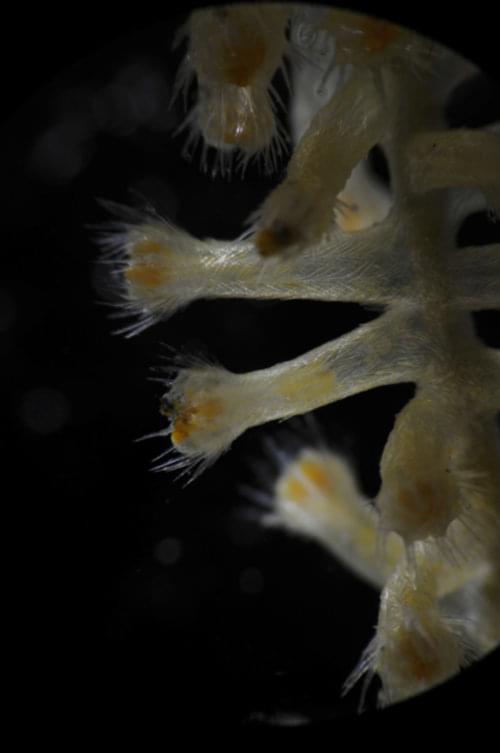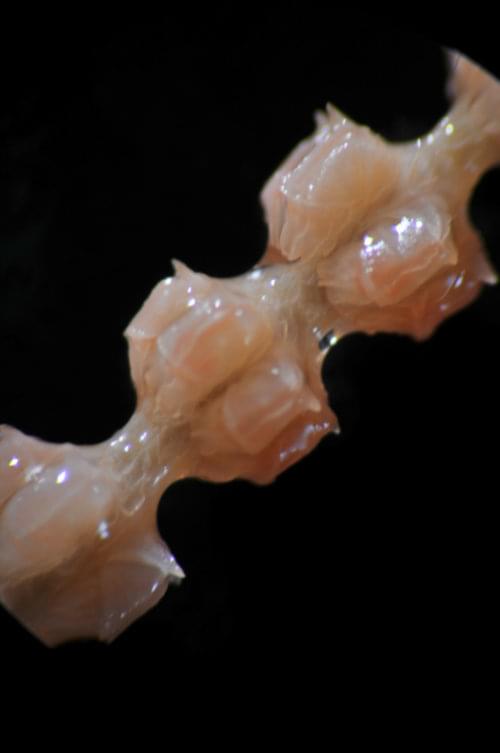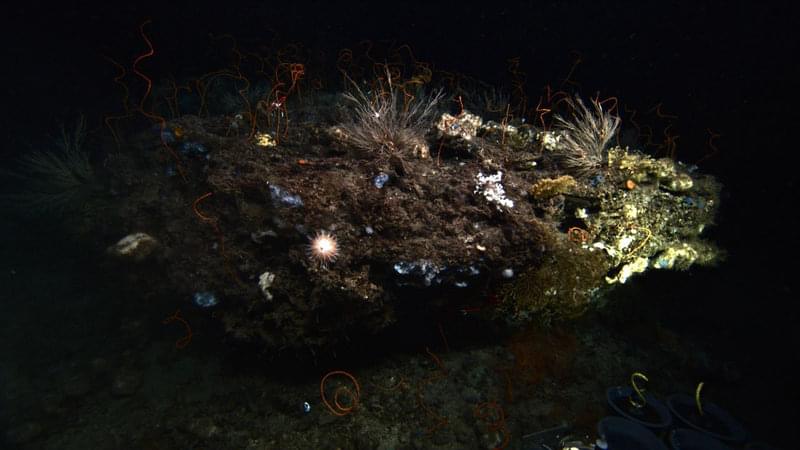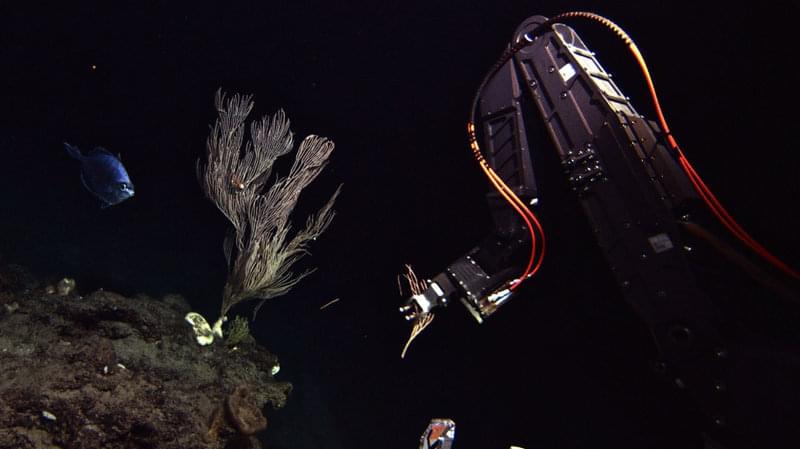
By Andrea Quattrini - Temple University
October 21, 2010
Collecting corals with the Jason manipulator arm. Video courtesy of Video Courtesy of Lophelia II 2010 Expedition, NOAA-OER/BOEMRE. Download (mp4, 33.5 MB).
Octocorals in the deep sea are highly diverse, and new species are continually being collected and described with the help of deep-sea expeditions such as this one on the R/V Ron Brown. One focus in this project is to document what octocoral species live in the Gulf and how they are related to each other. We are also interested in what processes (environmental, dispersal, historical) influence where octocorals live. This information is important to know, not just because it is interesting science, but also because it is important for successful conservation of deepwater corals. Answering these types of questions will help us to determine what areas and what coral species may be most susceptible to diversity loss or population decline due to human or environmental disturbances. Gathering this information now is essential, particularly in the face of global climate change and continued oil exploration.
This large rock outcropping is covered with gorgonian and scleractinian corals, including Lophelia, and home to a galatheid crab. Video courtesy of Video Courtesy of Lophelia II 2010 Expedition, NOAA-OER/BOEMRE. Download (mp4, 3.7 MB).

Microscopic view of the coral polyps of Paracalyptrophora sp. and Acanthogorgia sp. showing the differences in polyp morphology between species. Polyps of Paracalyptrophora are downward, and arranged in whorls whereas Acanthogorgia has non-contractile polyps projecting outward from the axis. Also, Paracalyptrophora has larger, flat sclerites whereas the sclerites of Acanthogorgia are thin, and spine-like. Image courtesy of Lophelia II 2010 Expedition, NOAA-OER/BOEMRE. Download larger version (jpg, 145 KB).

Microscopic view of the coral polyps of Paracalyptrophora sp. and Acanthogorgia sp. showing the differences in polyp morphology between species. Polyps of Paracalyptrophora are downward, and arranged in whorls whereas Acanthogorgia has non-contractile polyps projecting outward from the axis. Also, Paracalyptrophora has larger, flat sclerites whereas the sclerites of Acanthogorgia are thin, and spine-like. Image courtesy of Lophelia II 2010 Expedition, NOAA-OER/BOEMRE. Download larger version (jpg, 115 KB).
Octocorals (soft corals, sea fans, and sea whips) are cnidarians and are in the same class (Anthozoa) as their stony coral relatives, such as Lophelia pertusa. However, octocorals differ by having 8 tentacles and 8 internal mesentaries in their polyps, compared to the hard hexacorals that have multiples of 6. In addition, most species do not have a hard, stony skeleton secreted over their tissue like L. pertusa. Instead, most of these corals have central axes and calcium carbonate scale-like structures embedded in their tissue known as sclerites. These not only provide the coral with structure and protection, they also provide scientists with important clues to their identification.
The first step in documenting octocoral diversity is to identify the species in hand. This may seem like an easy task, but it's actually a challenging aspect of octocoral research. In fact, there are only a handful of octocoral taxonomists around the world. Species are not always easily identified by branching morphology. A combination of other characteristics is needed, such as polyp number and arrangement and sclerite form. Sclerites are important diagnostic characters that display different shapes and sizes with varying degrees of ridges, crests, spines, and tubercles. A scanning electron microscope is often needed to appropriately view these microscopic elements. Combining morphological examination with DNA barcoding is enabling us to determine what species occur in the Gulf of Mexico and how they are genetically related to one another.

Octocoral diversity Image courtesy of Lophelia II 2010 Expedition, NOAA-OER/BOEMRE. Download larger version (jpg, 407 KB).

Collecting a small branch of a coral colony in the Jason manipulator arm. Image courtesy of Lophelia II 2010 Expedition, NOAA-OER/BOEMRE. Download larger version (jpg, 394 KB).
Our first week on the Ron Brown using the Jason ROV has been very successful for coral collections. The ROV is a great tool to collect corals with minimum impact to the specimen and the seafloor, unlike other methods such as trawls and dredges that can be destructive. The Jason pilots can guide the manipulator arms on the ROV to collect only a portion of the specimen, allowing the majority of the colony to stay intact. Although it is preferable to have an entire colony for identification, it is not necessary. We spend time before every collection imaging the colony to get appropriate views of the branching pattern that may be useful for accurate identification. We are also very careful not tosample more than is necessary to accomplish our scientific goals.
On dives this past week we have found at least 12 octocoral species, including one species that we are targeting for population genetic studies, Callogorgia americana. These collections have provided new information into the geographic and bathymetric distributions of octocorals in the Gulf. With every collection, we are adding to the overall species count, and we are getting one step closer to answering our questions.